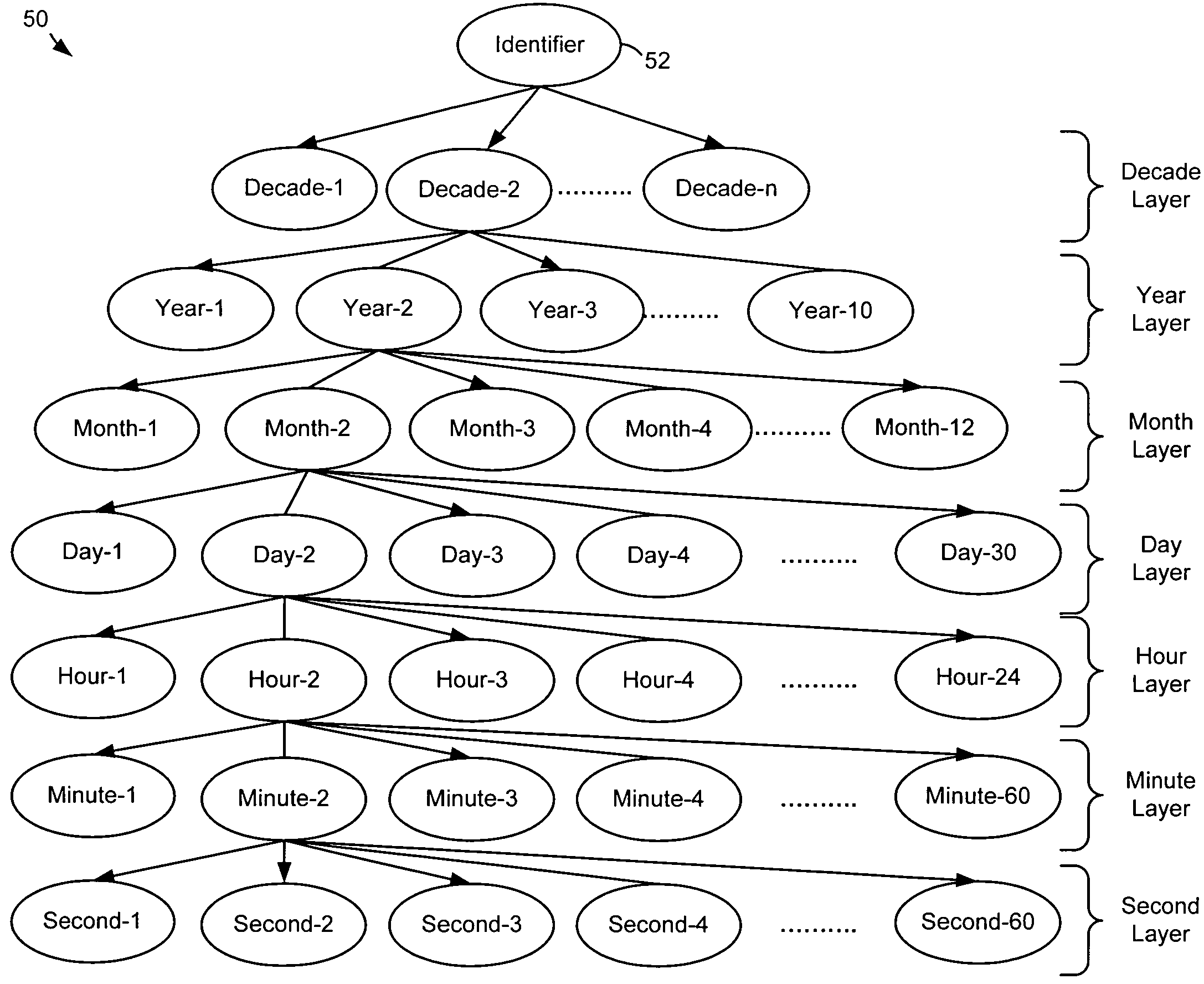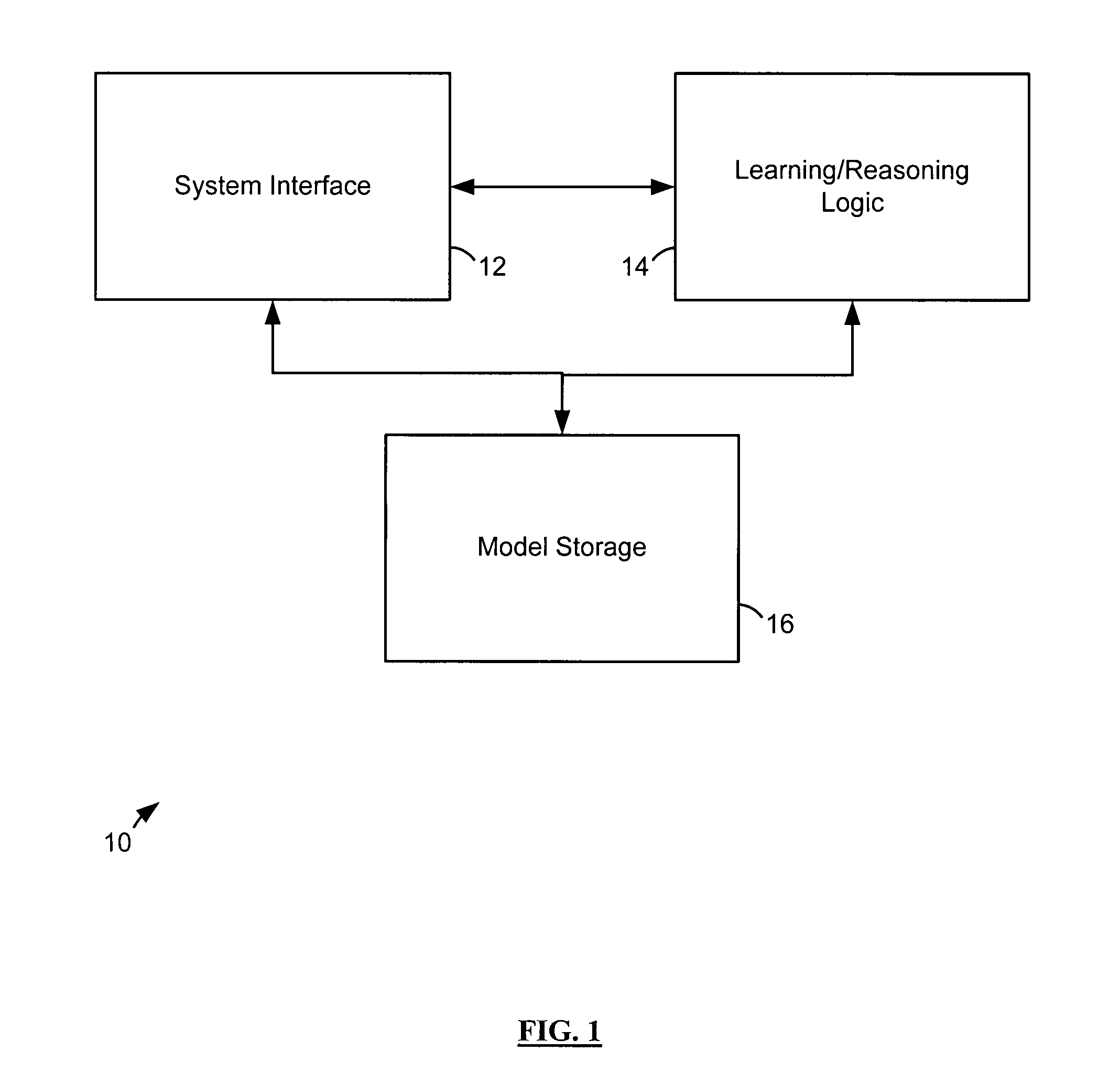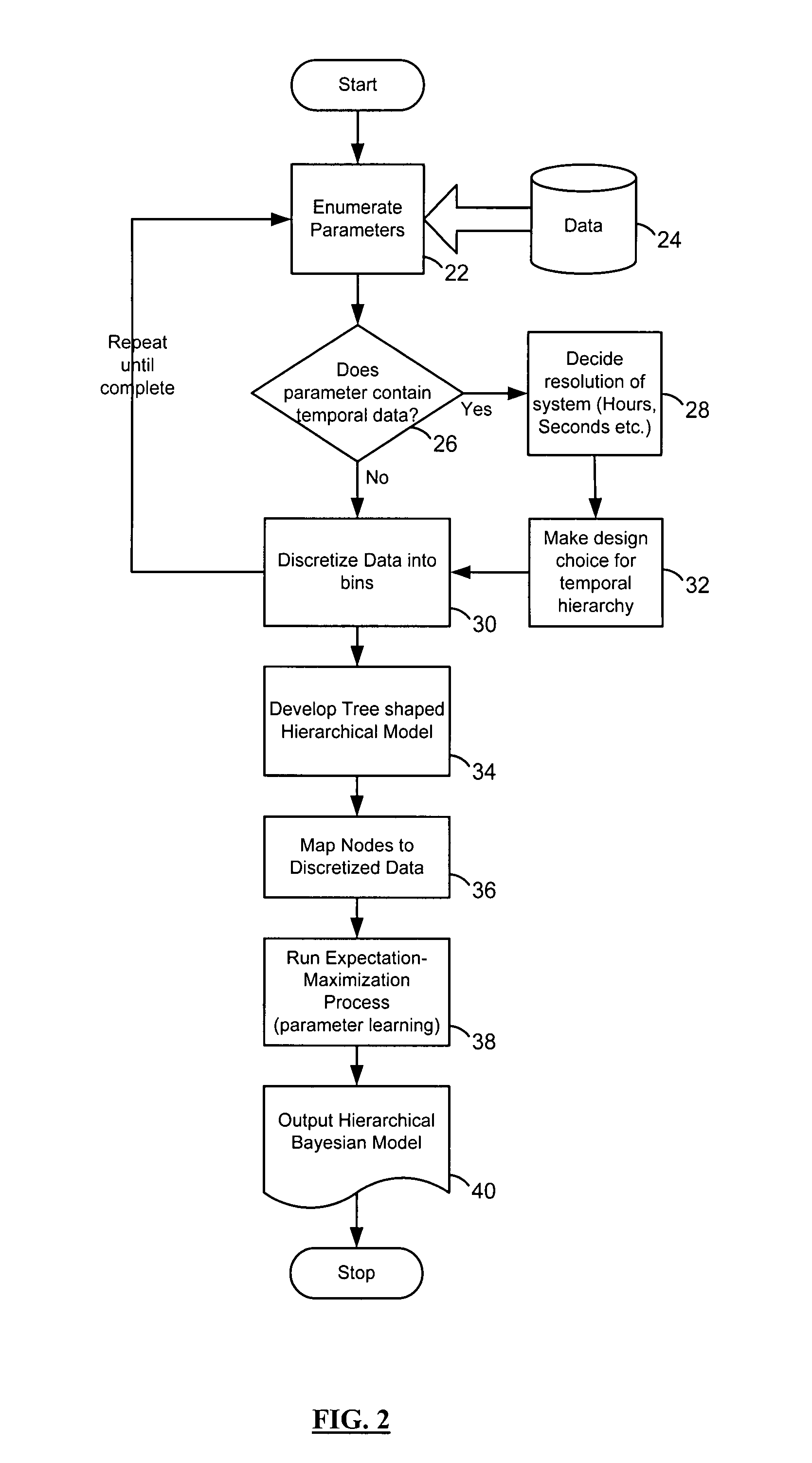Apparatus and method for learning and reasoning for systems with temporal and non-temporal variables
a temporal and non-temporal variable and system technology, applied in the field of machine learning, machine reasoning, machine intelligence, can solve the problems of human error, prejudice, preconceived notions, etc., and achieve the effect of capturing temporality inherently and elegantly, enhancing learning and reasoning, and improving learning and reasoning capabilities
- Summary
- Abstract
- Description
- Claims
- Application Information
AI Technical Summary
Benefits of technology
Problems solved by technology
Method used
Image
Examples
example 1
[0045]Referring to FIGS. 2 and 7, a specific illustrative implementation will now be described. This implementation is a weather forecasting system that is based on weather data consisting of two dynamic or temporal parameters, namely, temperature (expressed in degrees Fahrenheit) and relative humidity (expressed as a percentage). The data also includes one static or time invariant parameter, namely altitude (expressed in feet above sea level). The dynamic parameters were measured for three consecutive days at six hour intervals. The training data are shown in Table 2.
[0046]
TABLE 2RelativeLocationDateTimeTemperature(F.)Humidity(%)Altitude (ft)Boston, MAJan. 01, 2004 0:0014.381140Boston, MAJan. 01, 2004 6:0023.961140Boston, MAJan. 01, 200412:0027.277140Boston, MAJan. 01, 200418:0022.170140Boston, MAJan. 02, 2004 0:0011.975140Boston, MAJan. 02, 2004 6:0022.180140Boston, MAJan. 02, 200412:0028.882140Boston, MAJan. 02, 200418:0023.489140Nashua, NHJan. 01, 2004 0:0018.381150Nashua, NHJan...
PUM
 Login to View More
Login to View More Abstract
Description
Claims
Application Information
 Login to View More
Login to View More - R&D
- Intellectual Property
- Life Sciences
- Materials
- Tech Scout
- Unparalleled Data Quality
- Higher Quality Content
- 60% Fewer Hallucinations
Browse by: Latest US Patents, China's latest patents, Technical Efficacy Thesaurus, Application Domain, Technology Topic, Popular Technical Reports.
© 2025 PatSnap. All rights reserved.Legal|Privacy policy|Modern Slavery Act Transparency Statement|Sitemap|About US| Contact US: help@patsnap.com



